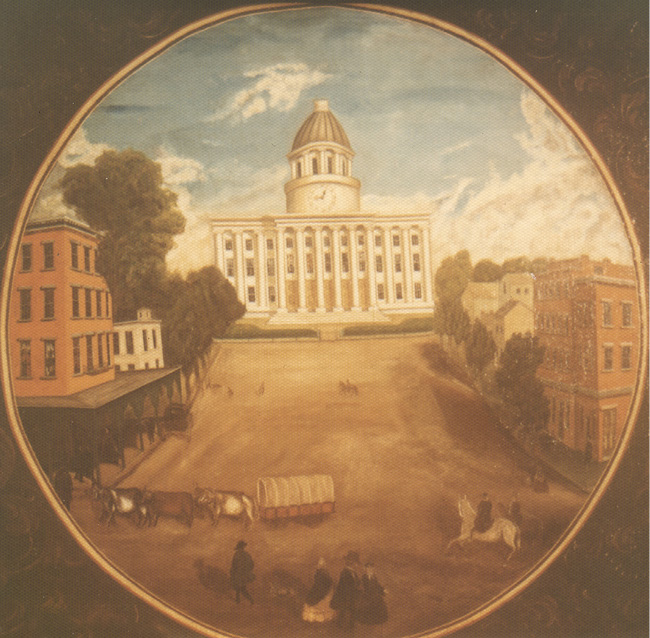January 1854
Robert Everest, a graduate of Oxford, served in Bengal as a chaplain of the East India Company. He was opposed to slavery, but he did believe that Southern plantation slaves were no worse off than English rural workers. This was no mere offhand opinion. After all, Everest’s scholarly work included On the Influence of Social Degradation in Producing Pauperism and Crime, as Exemplified in the Free Colored Citizens and Foreigners in the United States. This treatise, inspired by his similar work in British India, and read to London’s Statistical Society in 1854 and printed in the Journal of the Statistical Society of London in 1855, was also printed in the Southern De Bose Review during the same year.
Although the Reverend Everest had a marked scholarly inclination, he was also interested in local color and atmosphere—the state of the roads, life on riverboats, card playing, dancing, and dueling. The short passage below illustrates both interests.
Robert Everest, A Journey Through the United States and Part of Canada (London: John Chapman, 1855), 113–115.

Painting of the second Capitol designed by Barachias Holt of Maine. This painting of the 1851 building dates from the 1850s.
CHAPTER X
After a very short stay [in Mobile], I left by the steamer on the Alabama river for Montgomery. This river is not above 80 yards to 100 yards wide, and, where it issues from the swamp, is enclosed between high banks covered with forest, and runs at a rapid rate. Its breadth does not vary all the way to Montgomery, but its steep banks show at times sections of red and variegated marl, similar to what I had seen between Philadelphia and Washington. Montgomery, at which we arrived after a voyage of forty hours, is pleasantly situated upon a hill of these marly strata, 50 feet or more above the level of the river. The streets are well laid out, at right angles to each other, as in most American towns, but as the roadway is neither paved nor macadamized, and the weather happened to be wet when I was there, it was a perfect quagmire, through which beasts of every kind struggled as they could.
The Capitol is well situated on an eminence, and, as the Legislature was sitting, I went to have a look at them.
I entered a large circular chamber, below a dome, where a number of members were sitting at desks with pens, ink, and paper before them. These desks are arranged in circular lines, as seats in a theatre are, the “Chair” occupying the spot that in the theatre would be the centre front of the stage. This form appears to be general in the American Houses of Legislature, and naturally so, for it is well known that this is the form of building when enables the greatest numbers of persons to hear, and to be heard with ease. Strange to say, the example has not been followed in England, though, at the time of rebuilding the Houses of Parliament, an opportunity was afforded of making a change in the shape of the chambers.
From the Capitol the view extends over a thick forest as far as the eye can reach. The State of Alabama is but thinly inhabited, the number of inhabitants to a square mile not being above fifteen, by the last Census of 1850.
The beds of red and variegated marl here are said to belong to the eocene formation.
When the time came for my departure, I was dragged through the quagmire about a mile in a coach to the railway station, set down with no shelter from the sky on a rainy day, and placed in a train that managed to accomplish 88 miles in about eight hours. Down poured the rain during these eight hours, and, except occasional clearings of cotton fields, all that could be seen was pine forest and swamp, and the blue mist that had settled down upon them. On arriving at our journey’s end, West Point, we were again set down in the rain, and had to make the best of our way through the mud to a wooden shed near, denominated the Hotel, where we slept. The afternoon was so warm, that windows were thrown open, and people were sitting outside the house, smoking (17th January).